Abstract
Sixteen pigeons were trained to peck a key using a response-independent (auto-shaping) procedure of food presentation. The 4-sec grain presentations were independent of responding but a keylight stimulus preceded each, with a 4-min interval between the grain presentation and the next stimulus. Subjects were divided into four groups, with two durations of the keylight (30 or 120 sec) and either one or four successive colors on the response key preceding food delivery. In Phase 2, the birds were continued with the same keylight duration but were presented the alternative number of key colors. All pigeons pecked the key during the stimulus. Birds in the two groups with the 30-sec stimulus duration began to respond significantly sooner than birds with the 120-sec duration. There were no significant differences in rate of pecking between groups by the last five days of Phase 1. In Phase 1, the pigeons exposed to the four stimulus components showed an increase in rate of pecking over the four components as grain presentation approached. The pigeons with one stimulus component did not exhibit this regularity. Analogous conditions in Phase 2 had similar results except for one group. The implications of the occurrence of key pecking due to response-independent food delivery for multiple and chained schedules were pointed out.
Full text
PDF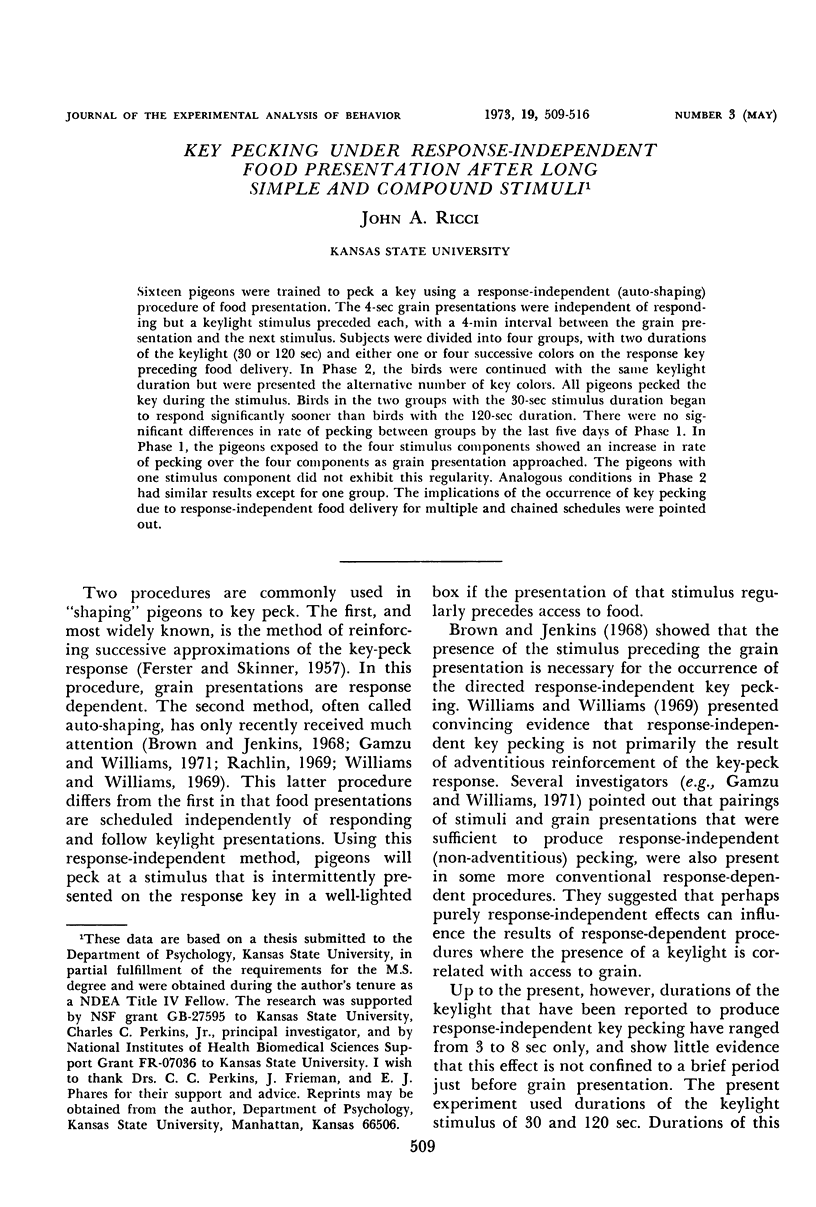
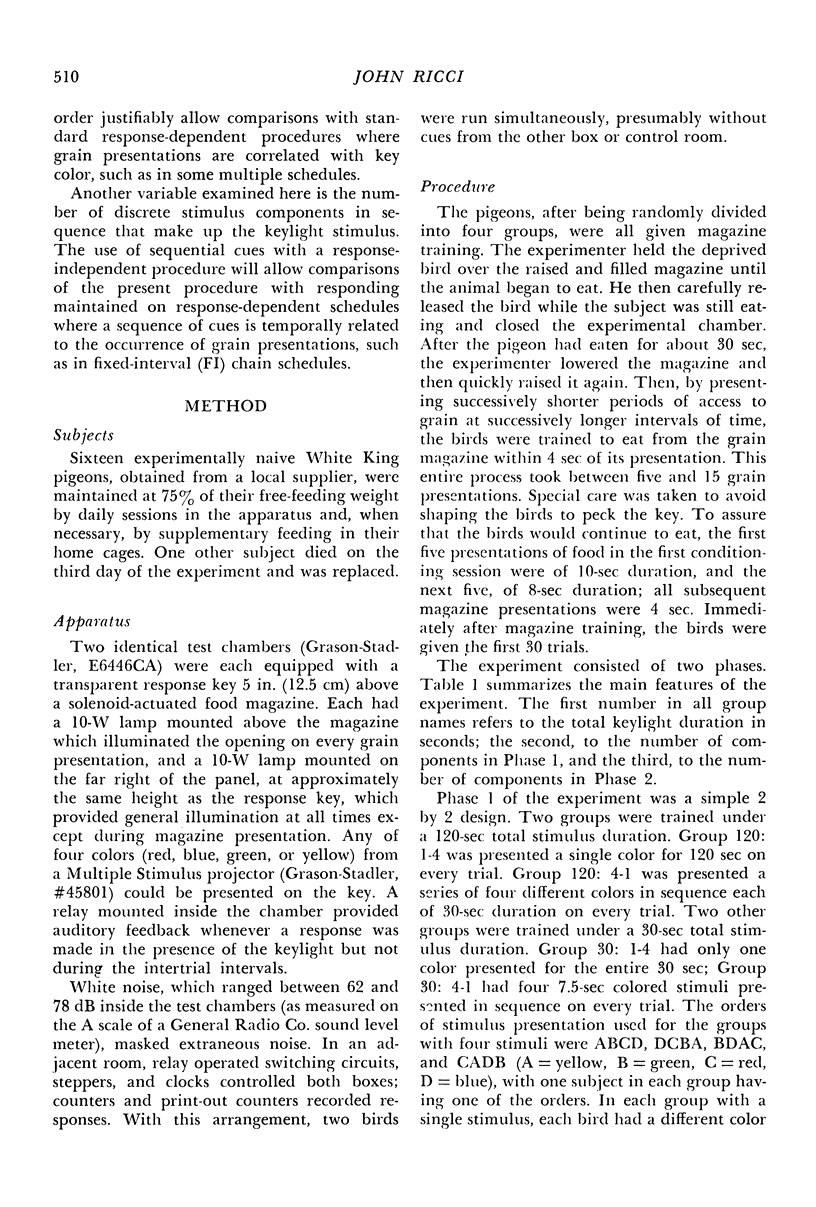
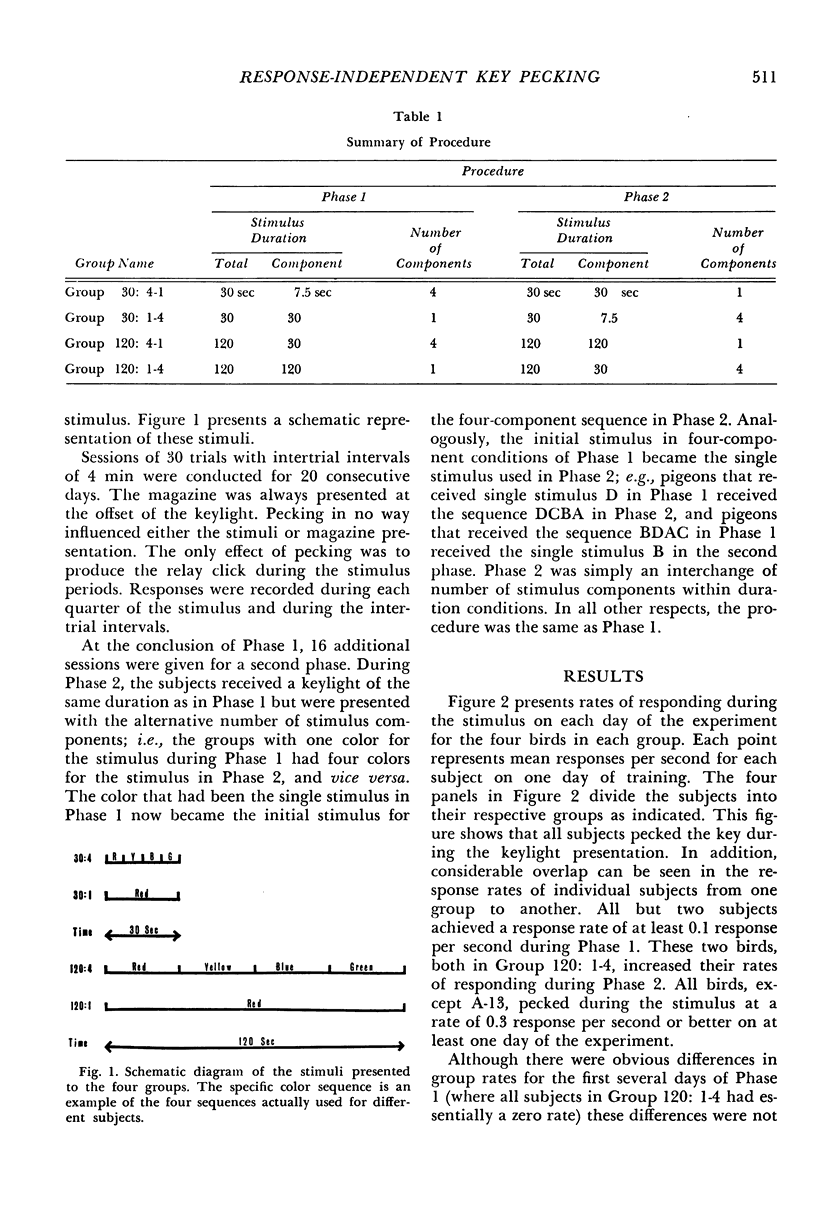

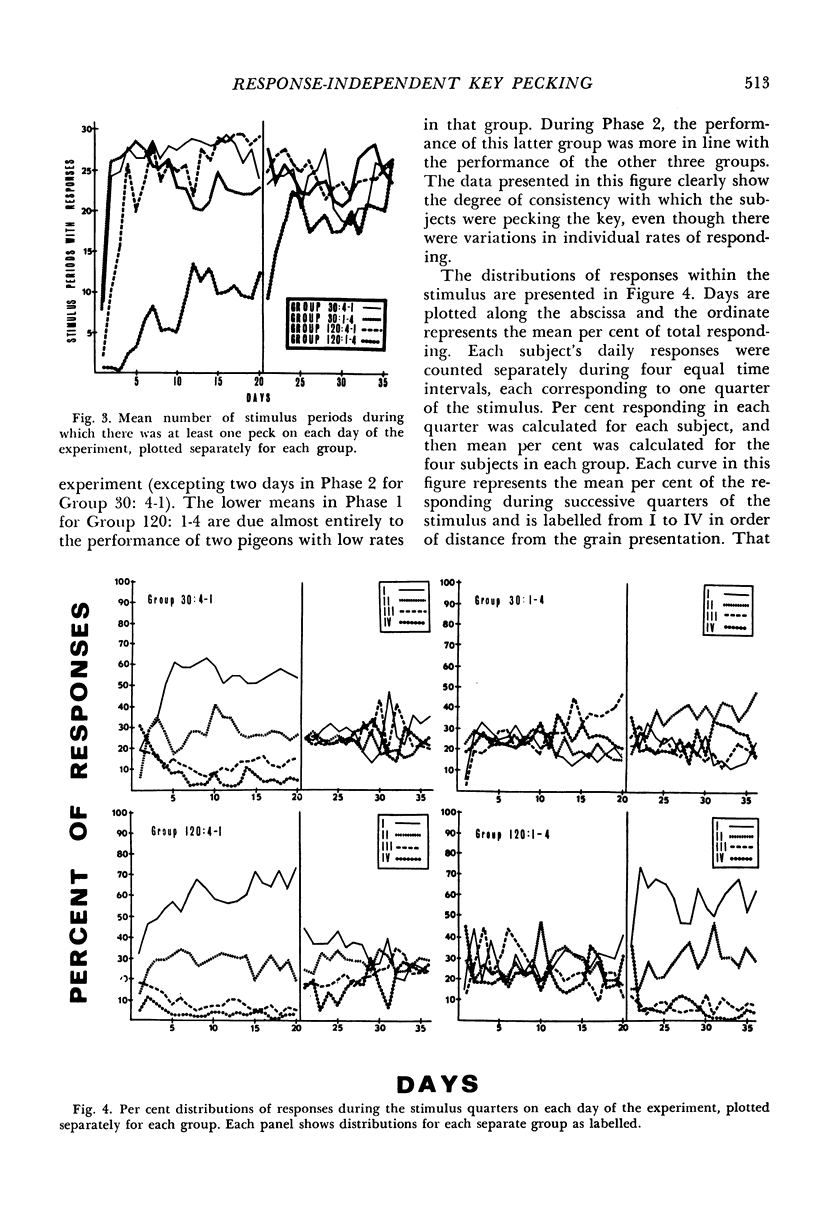
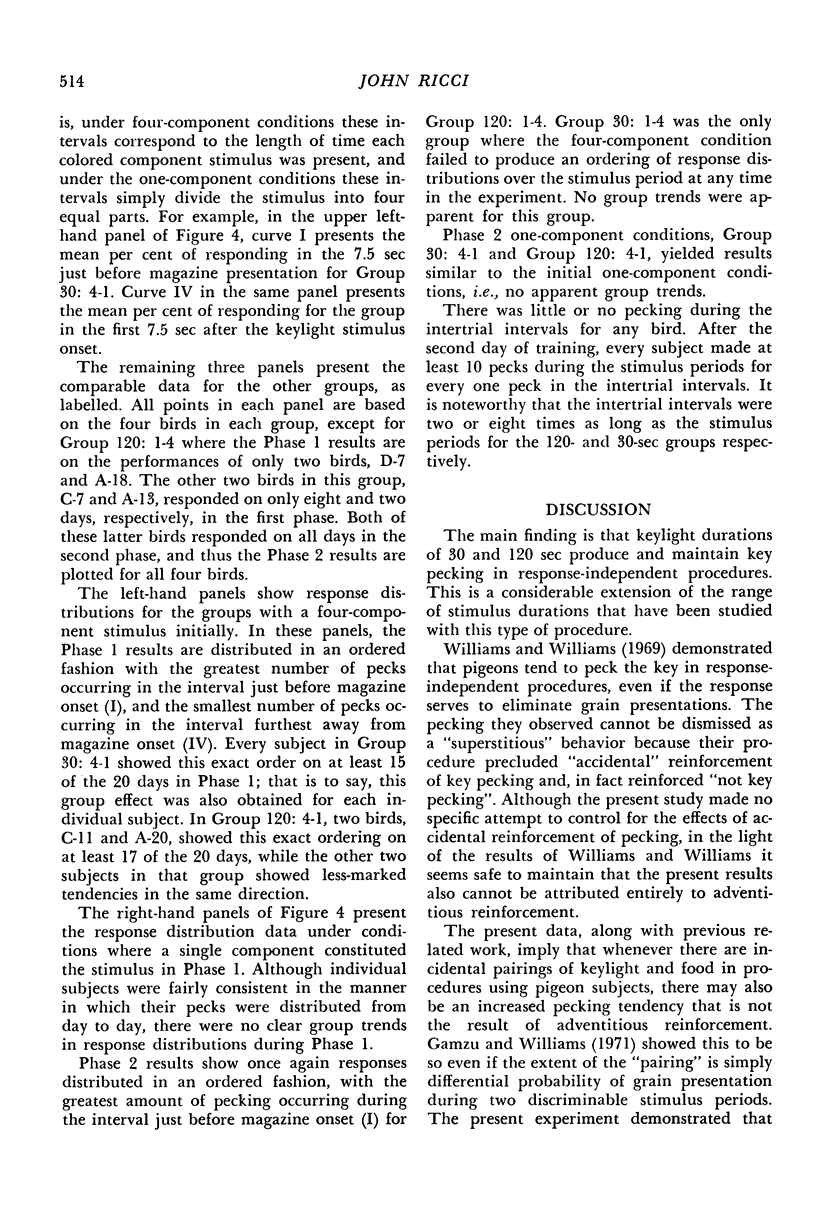
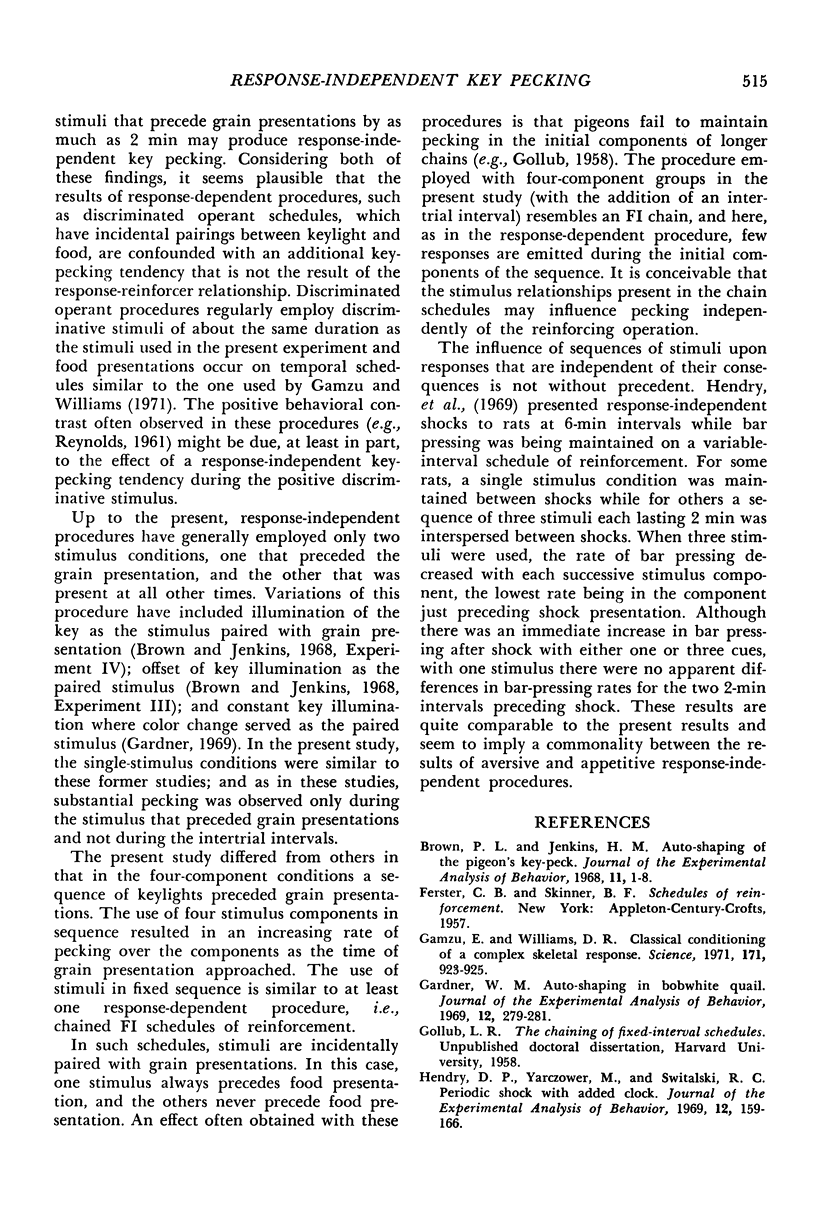

Selected References
These references are in PubMed. This may not be the complete list of references from this article.
- Brown P. L., Jenkins H. M. Auto-shaping of the pigeon's key-peck. J Exp Anal Behav. 1968 Jan;11(1):1–8. doi: 10.1901/jeab.1968.11-1. [DOI] [PMC free article] [PubMed] [Google Scholar]
- Gamzu E., Williams D. R. Classical conditioning of a complex skeletal response. Science. 1971 Mar 5;171(3974):923–925. doi: 10.1126/science.171.3974.923. [DOI] [PubMed] [Google Scholar]
- Gardner W. M. Auto-shaping in bobwhite quail. J Exp Anal Behav. 1969 Mar;12(2):279–281. doi: 10.1901/jeab.1969.12-279. [DOI] [PMC free article] [PubMed] [Google Scholar]
- Hendry D. P., Yarczower M., Switalski R. C. Periodic shock with added clock. J Exp Anal Behav. 1969 Jan;12(1):159–166. doi: 10.1901/jeab.1969.12-159. [DOI] [PMC free article] [PubMed] [Google Scholar]
- REYNOLDS G. S. Behavioral contrast. J Exp Anal Behav. 1961 Jan;4:57–71. doi: 10.1901/jeab.1961.4-57. [DOI] [PMC free article] [PubMed] [Google Scholar]
- Rachlin H. Autoshaping of key pecking in pigeons with negative reinforcement. J Exp Anal Behav. 1969 Jul;12(4):521–531. doi: 10.1901/jeab.1969.12-521. [DOI] [PMC free article] [PubMed] [Google Scholar]


